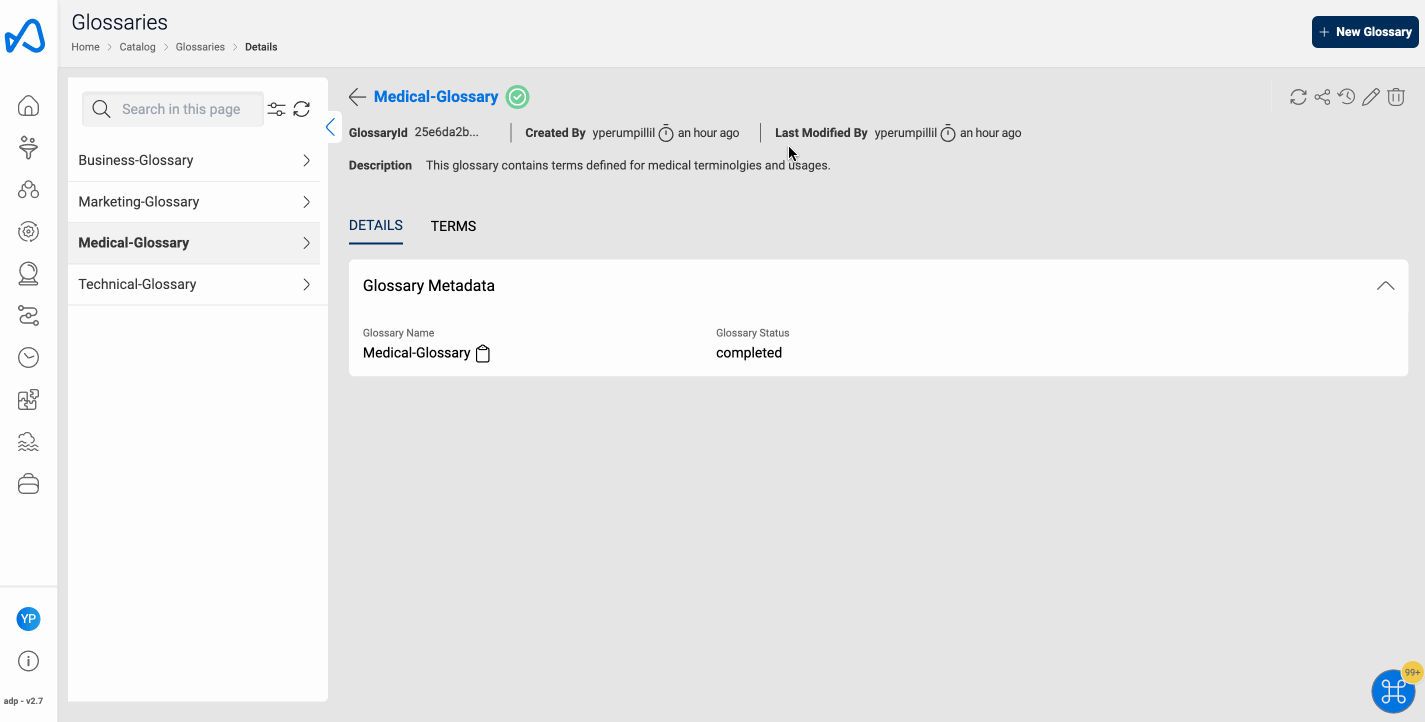Glossaries
Glossaries in Amorphic represent a collection of clearly defined terms that anyone can understand, providing clarity and consistency across a particular domain or field. Glossaries ensure organizations speak the same language by clearing up ambiguity in terminologies and helps manage asset metadata, by linking glossary terms to datasets and views, enhancing data clarity and organization across your assets. Definitions form part of a business ontology, helping organizations understand how different terms relate to one another.
For example, a "PRESCRIPTION" term could be defined under a medical glossary as a formal instruction from a licensed healthcare provider or practicioner, with "HOSPITAL_ID" and "DOCTOR_ID" terms that are also defined under the same glossary.
In this way, Glossaries help ensure everyone in the organization uses the same language when referring to key concepts. Such definitions are specific enough to capture relationships between entities and concepts accurately, yet sufficiently open to accommodate varying interpretations or contexts.
Glossaries are available under the catalog section.

How to create a Glossary?
Creation of a glossary in Amorphic is very straight-forward :
- Click on the
+ New Glossarybutton on the listing page. - Enter a valid
Glossary nameandDescription. Providing a meaningful description helps users recognize context that the glossary provides. - Finally click on
Create.

Viewing Glossary details
Inside the Glossary details page, you'll be able to see the Glossary description and status, as well as a separate tab for viewing the terms defined inside the Glossary.
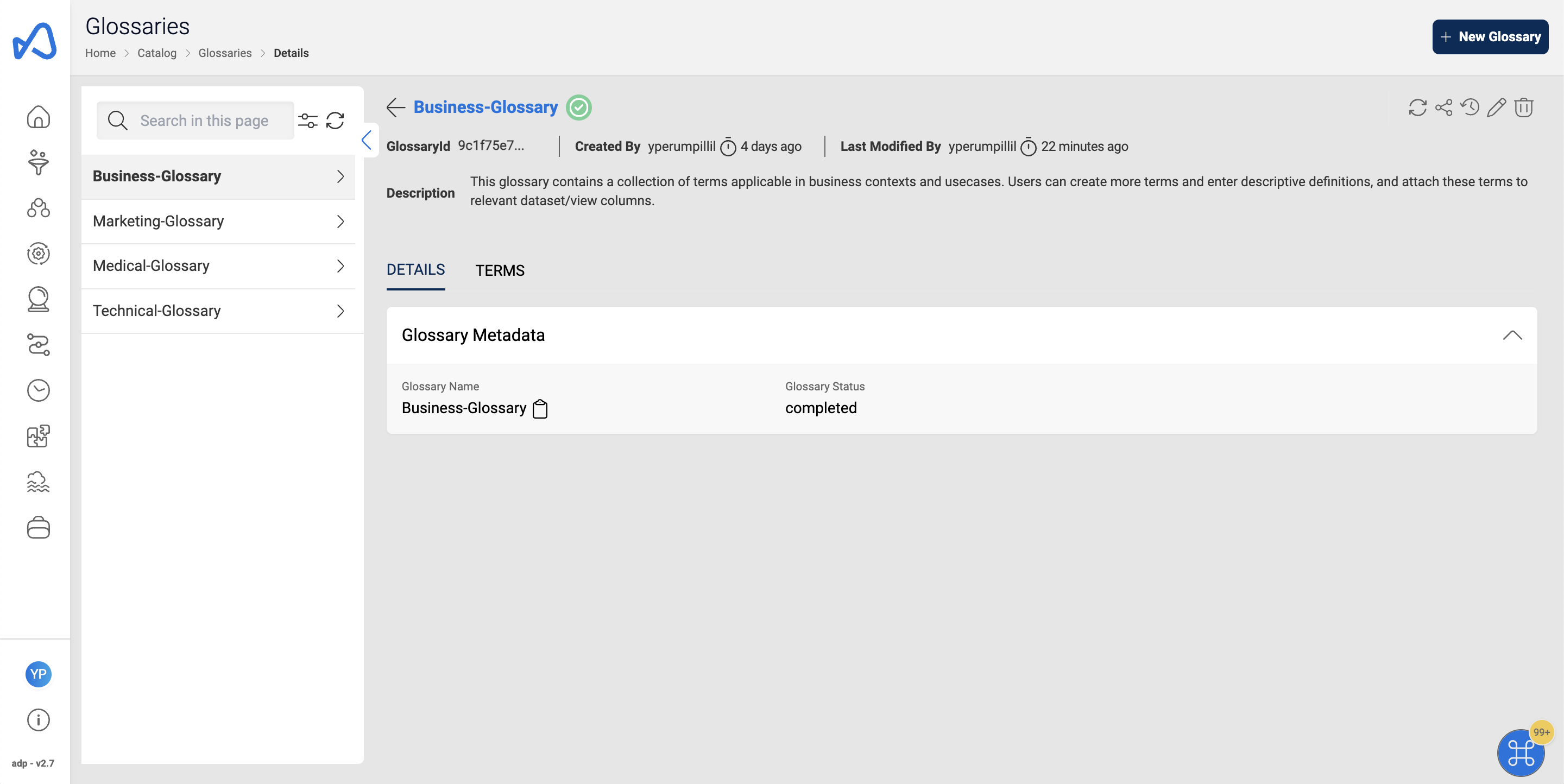
Navigating to the terms page, you will able to see all the terms that are defined with their relvelant term definitions. It is in this section that users can create new terms, update term details and delete terms.
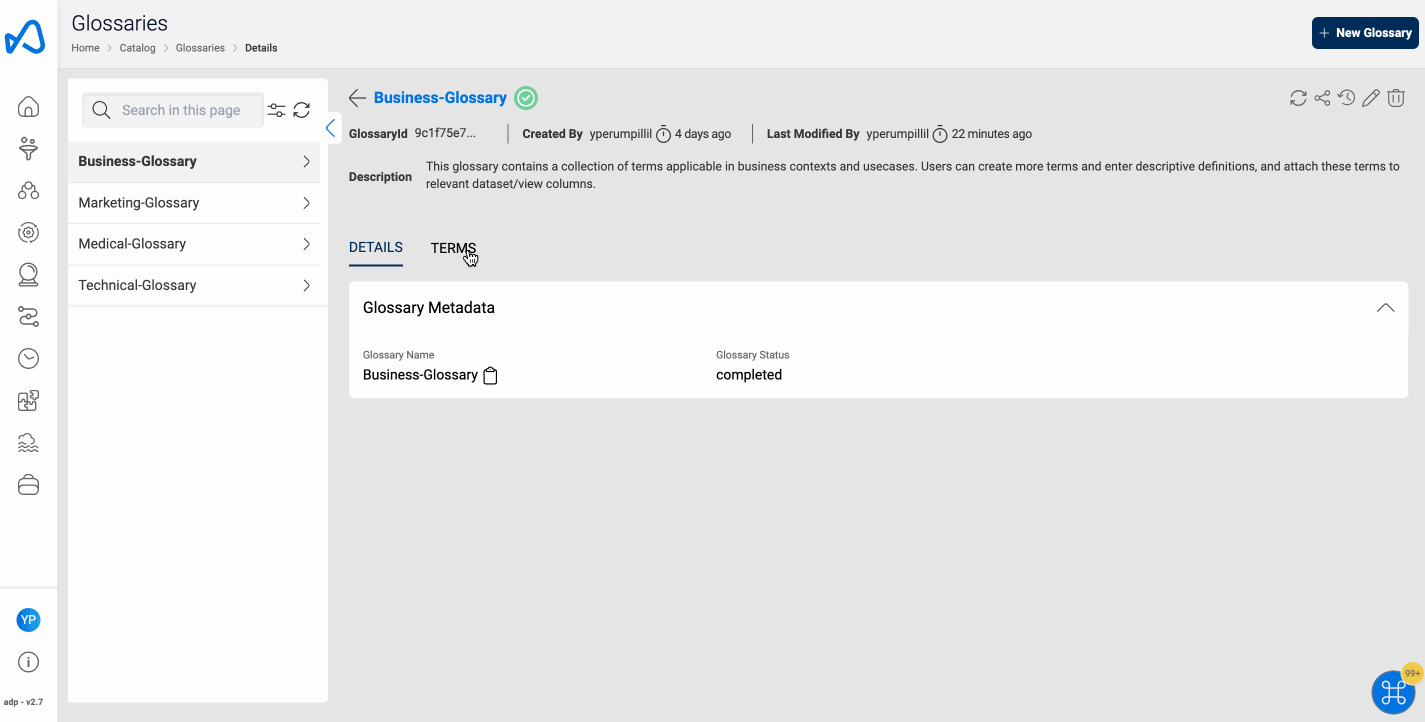
Defining terms inside a Glossary
Defining (creating) of a glossary term is also very straight-forward :
- Click on the
+ Ceate New Termbutton on the terms tab under the glossary details page. This opens up a side panel. - Enter a valid
Term NameandDefinition. Providing a meaningful definition helps give better context as to what the term signifies within the glossary. - Finally click on
Create.

Similarly, you can also update the term details (term name and definition) and delete a term from the Glossary.
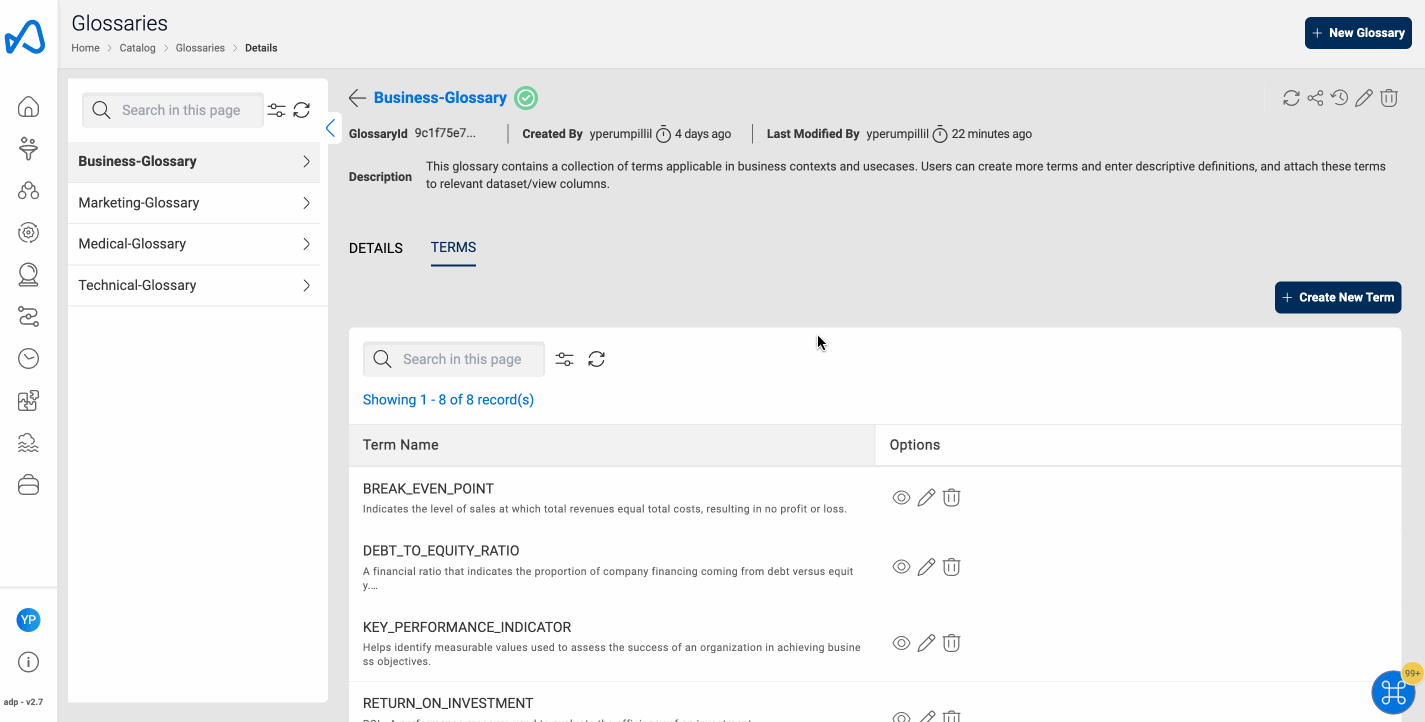
Discovering Glossaries
You can also view Glossaries from the Discover page under Catalog, as an asset of its own.
Here, users will also be able to search upon a specific term that may be definfed under any of the Glossaries.
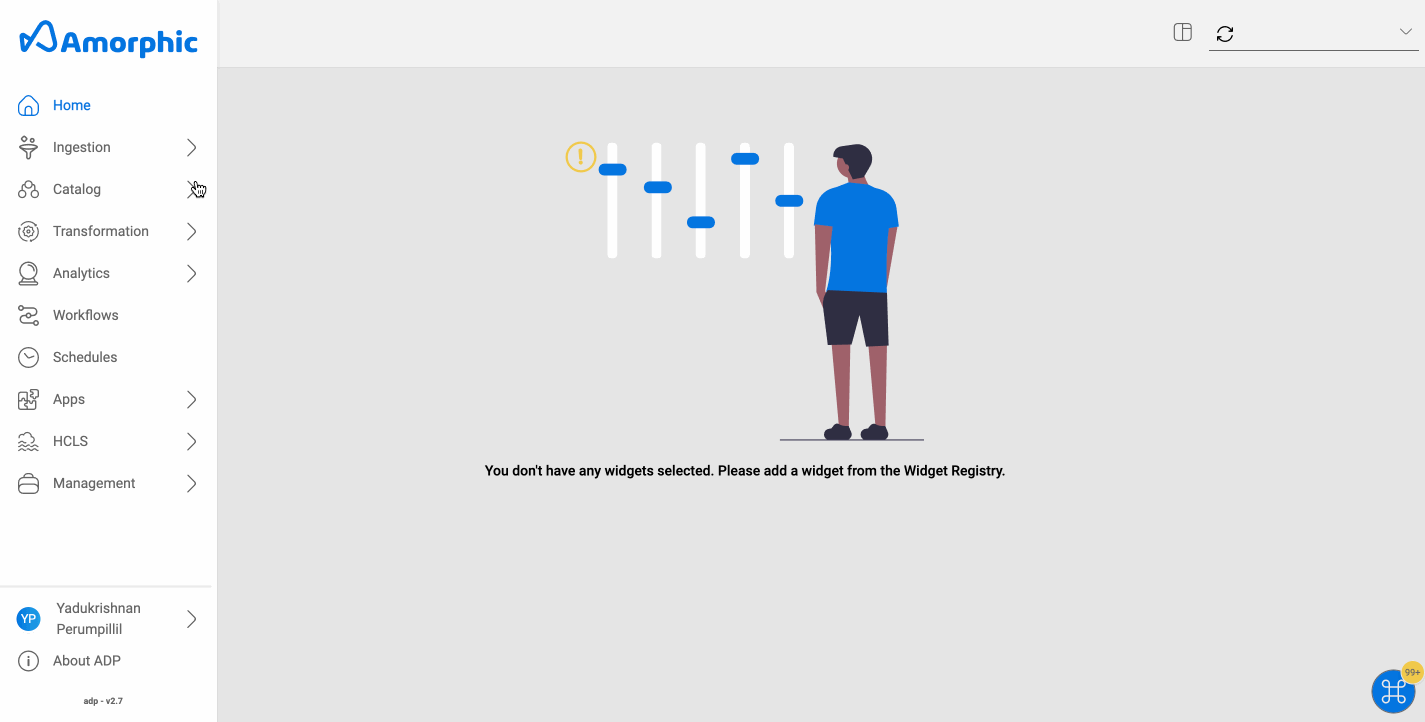
Activity logs and access sharing
Users can view activity logs for a Glossary, which include details such as :
- When was the Glossary created and by who?
- What details of the Glossary were updated?
- What terms were added/removed from the Glossary?

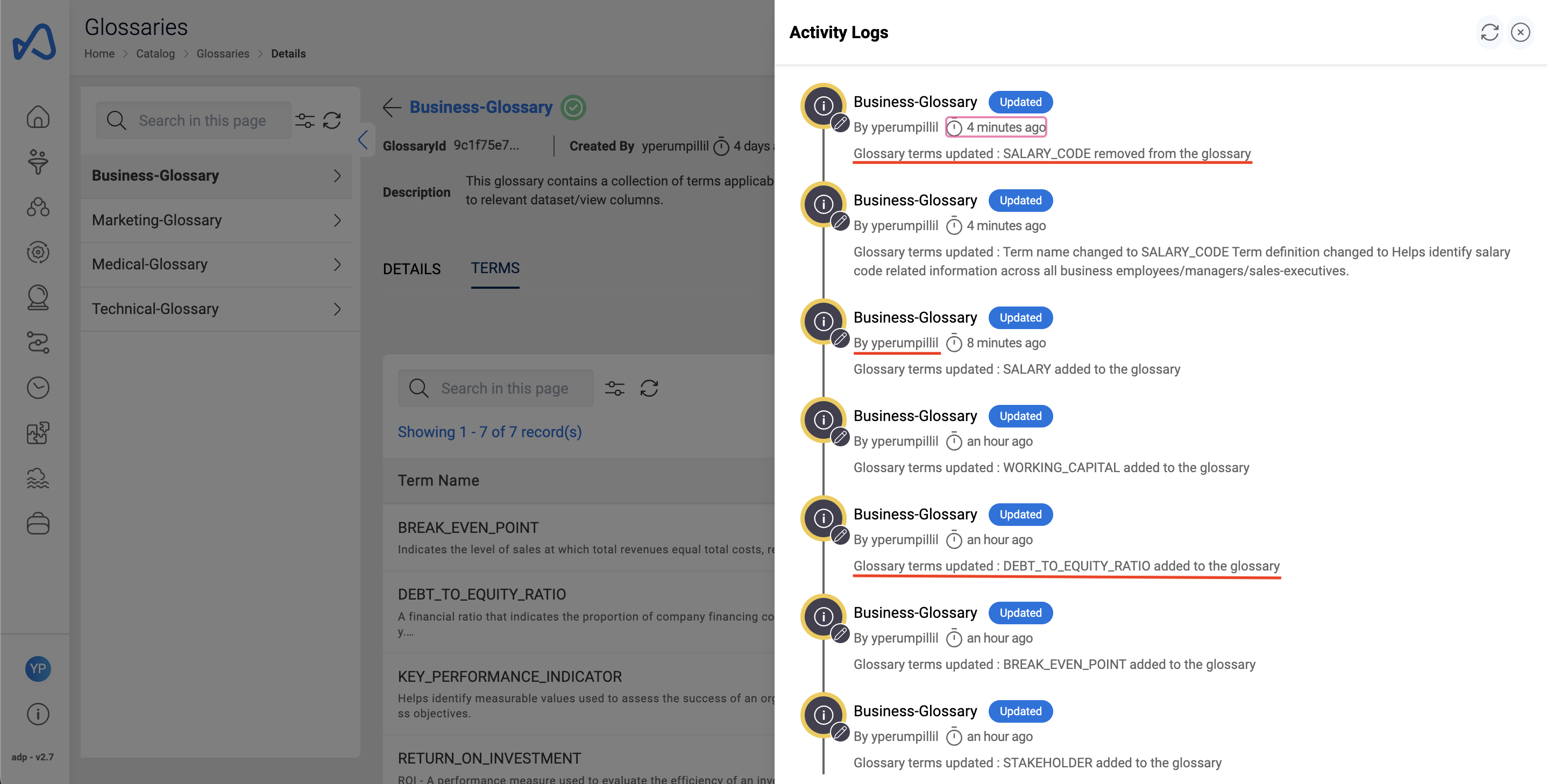
Additionally, you can share access to a Glossary to other users in Amorphic.
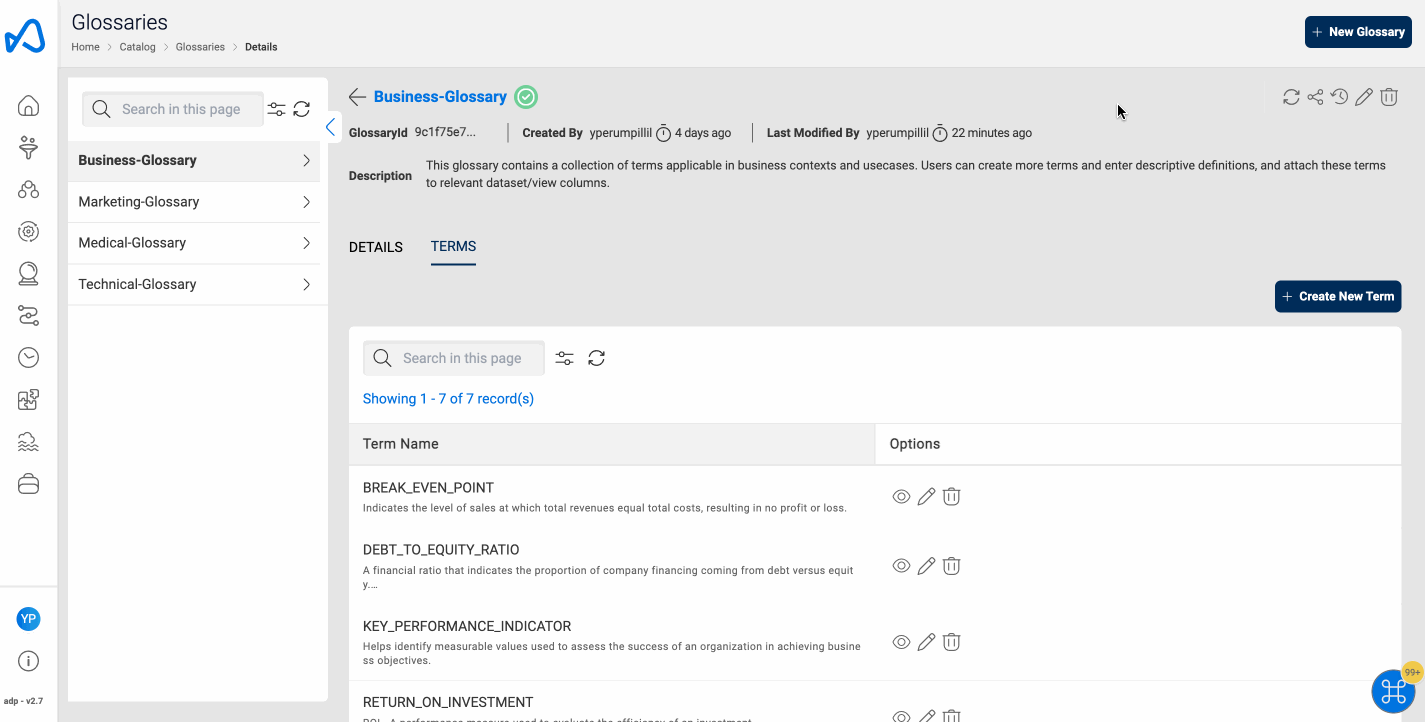
Deleting a Glossary
Finally, you can also delete an entire Glossary from Amorphic. Deleting a Glossary also deletes all terms inside it.
When a Glossary is deleted, all assets/columns linked to any of the terms that were defined inside the Glossary also get disassociated.
